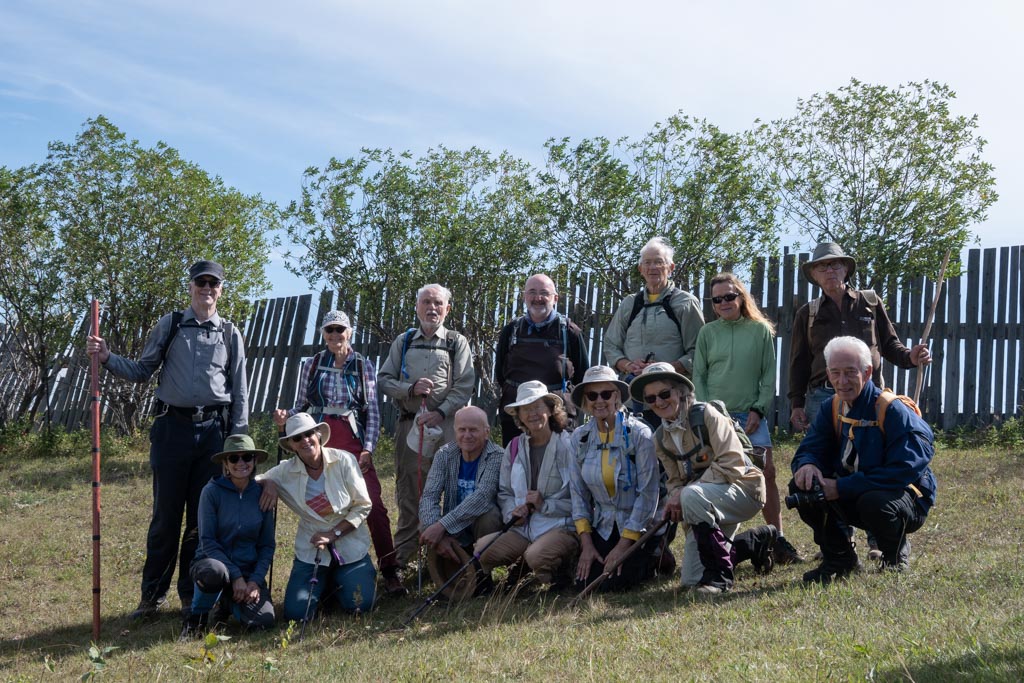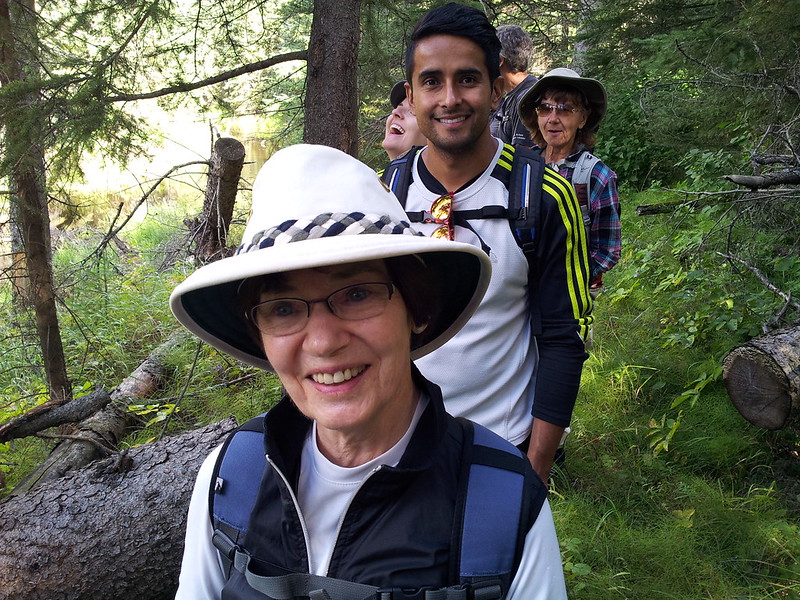Fourteen people came out for a special guided hike on the Gwynne trail section, to recognize and honour our longtime member, volunteer, and friend, Oscar Zawalsky.
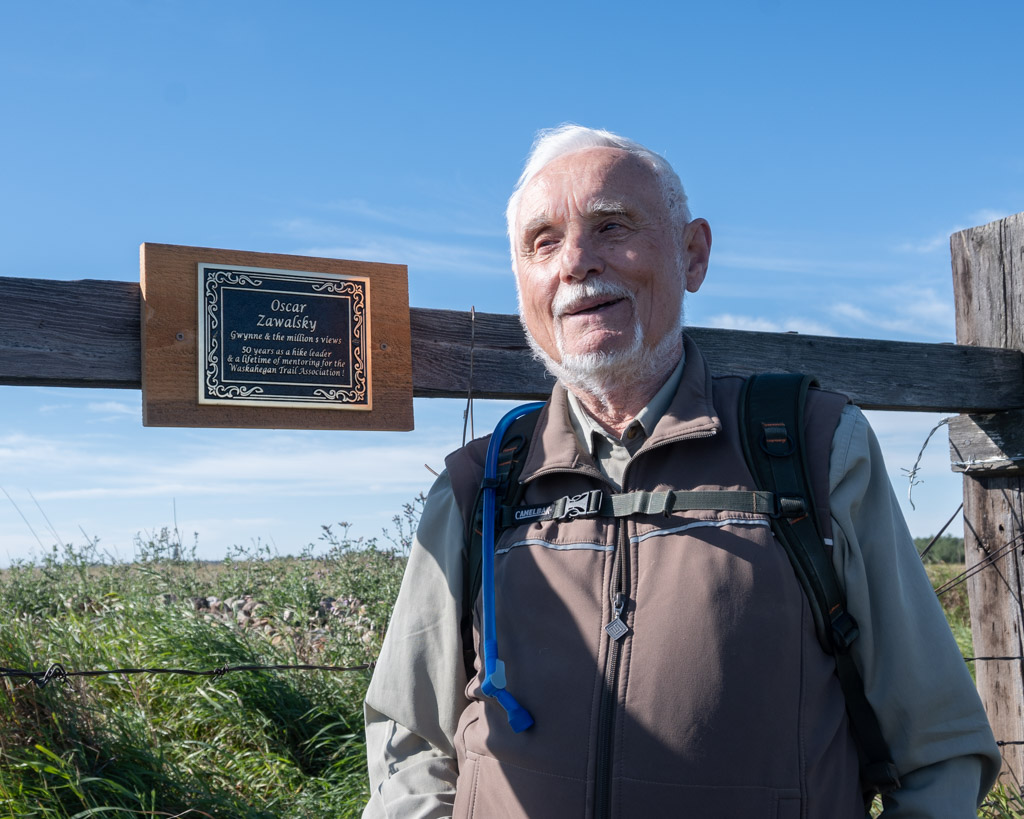
Oscar joined the Waskahegan Trail Association in 1971 and has supported us in trail maintenance, as a hike leader, and as a volunteer at the annual Canadian Birkebeiner Festival, or “Birkie.”
Oscar related how initially he only wanted to do trail maintenance. However, Stan Skirrow would not allow it until he became a member. Pushing back was useless. Oscar eventually gave in and joined.
Stan gave Oscar his first assignment—a section on the Coal Lake trail, coincidentally exactly where we are hiking next week. The assignment made Oscar wonder whether Stan was getting back at him for putting up resistance. In those days, we were not yet using power equipment, and the Coal Lake section had not been maintained for a few years. That summer, Oscar spent five weekends in a row, every Friday evening to Sunday afternoon, single-handedly clearing the trail of the heaps of large fallen poplars—using just a bow saw!
At the age of 86, Oscar is still volunteering by sharpening our chain saws, doling out warm beverages to the skiers at the Birkie’s Last Chance Food Station, and mowing the trail at the Coyote Lake property of the Nature Conservancy of Canada.
Why did we choose this particular spot to mount the plaque? Because Oscar always said it has the best view of anywhere on the Waskahegan Trail. From this spot, you can view the Gwynne Valley, the Battle River Valley, and the south end of Coal Lake, all at once.
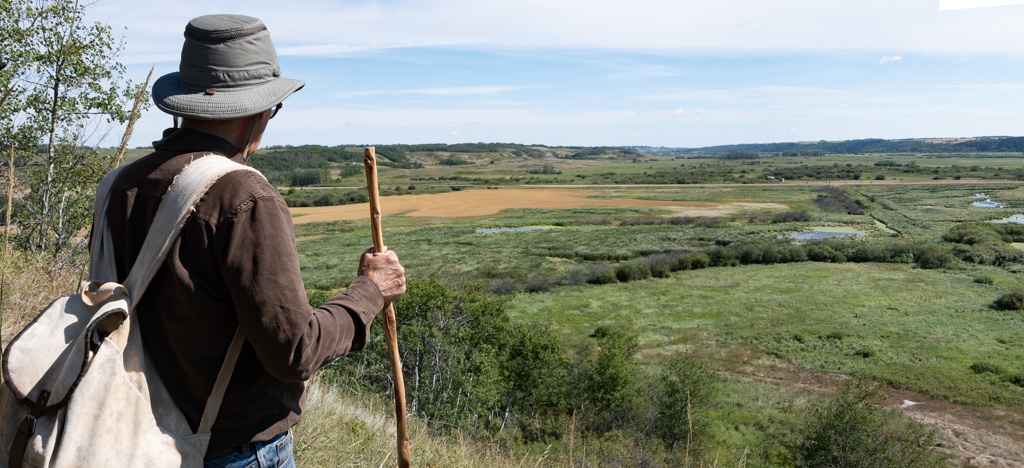
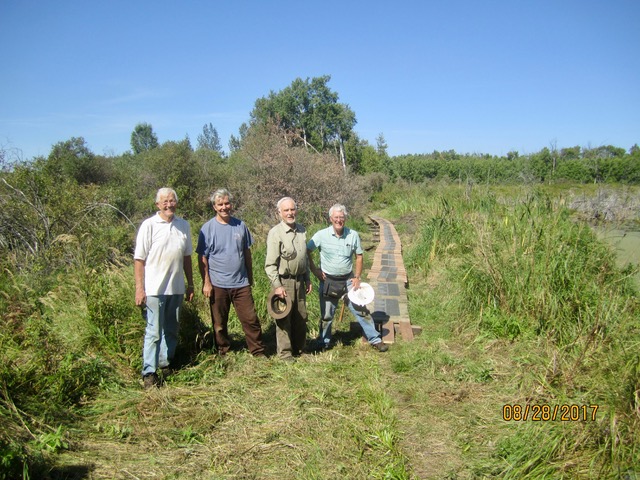
We took the opportunity to thank Oscar for being a mentor and an inspiration. For board members, he has been a valuable source of knowledge about the history of both the trail and the organization. For hikers and other volunteers, he inspires us to keep fit and active mentally, socially, and physically, by volunteering in activities we enjoy.
Thanks to Lee for leading the hike, to trail maintenance for clearing the trail, and to the landowners for their permission to keep the trail going and for letting us install the plaque. You can find more photos on Flickr.
